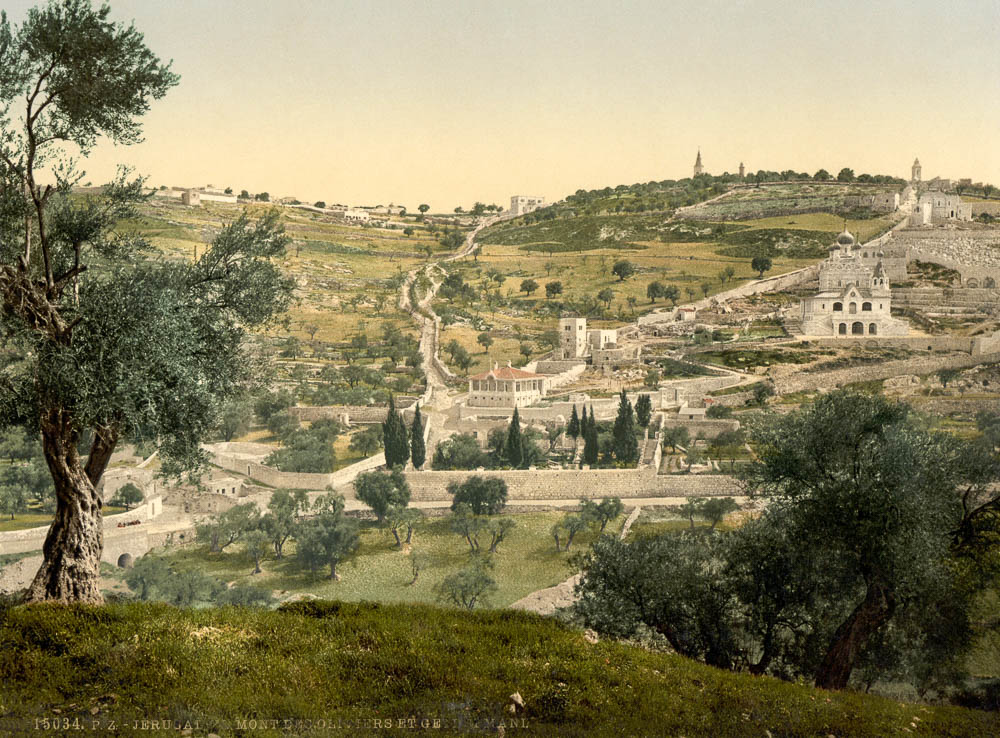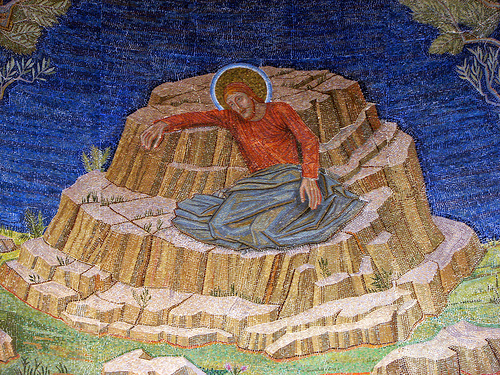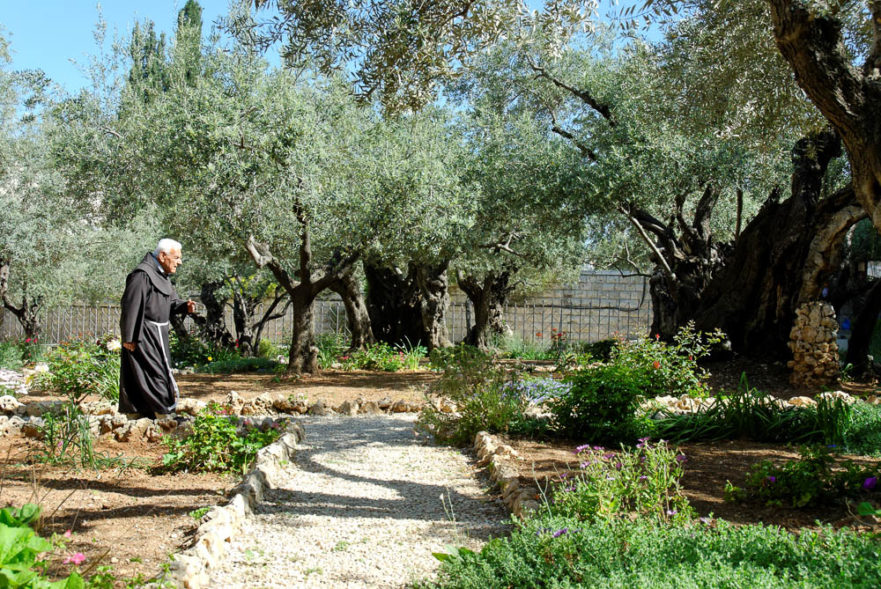| Rather listen instead? |
| JP members can click the link below for an audio version of this essay.[*]
Paid Content
Premium Members and Friends of JP must be signed in to view this content. If you are not a Premium Member or Friend, please consider registering. Prices start at $5/month if paid annually, with other options for monthly and quarterly and more: Sign Up For Premium  |
Gethsemane is famous to all readers of the Gospels as the place where Jesus prayed and was betrayed. The night before his crucifixion, Jesus led his disciples from the Upper Room to the slopes of the Mount of Olives in order that they might be prepared for the suffering that the Father had ordained. “Watch and pray,” Jesus told the eleven, mindful that Judas would soon arrive with soldiers to arrest him.

The place where these events transpired was in a garden across the Kidron Valley east of Jerusalem (John 18:1), on the Mount of Olives (Luke 19:39), in an area known as Gethsemane (Matt 26:36; Mark 14:32). Gethsemane is Hebrew for “oil press,” and so this place must have served the farmers who owned the olive groves on the western slopes of the Mount of Olives. Busy in the fall and winter seasons following the olive harvest, the area proved a suitable place for retreat during the springtime when Jesus visited Jerusalem for Passover. Apparently, Jesus came here regularly, perhaps sleeping here each night in the week leading up to his crucifixion (Luke 21:37; 22:39). This likely explains two interesting features of the narratives: how Judas knew to find Jesus here, and why the disciples felt no concern at falling asleep.

Christians have long found great spiritual instruction in Jesus’s example of prayer at Gethsemane. Their rabbi prayed three times to the Father, asking him to take away the cup of suffering that lay before him. Yet each time, Jesus declared his submission to his Father’s will. The one who had taught the disciples to pray, “Thy will be done,” now modeled for them surrender to the Lord’s plan. No wonder Jesus was in such great agony (ἀγωνίᾳ) and his sweat was “like drops of blood” (Luke 22:44). The writer of Hebrews characterizes Jesus’s prayers in Gethsemane as filled with “loud cries and tears,” yet these were offered in “reverent submission” (Heb 5:7-8). Unlike his disciples, Jesus neither fell asleep nor ran, and strengthened by his vigilance in prayer, he stood ready when Judas arrived with his captors.
Premium Members and Friends of JP must be signed in to view this content.
If you are not a Premium Member or Friend, please consider registering. Prices start at $5/month if paid annually, with other options for monthly and quarterly and more: Sign Up For Premium
- [1] R. Steven Notley and Ze‘ev Safrai, Eusebius, Onomasticon: The Place Names of Divine Scripture: Including the Latin Edition of Jerome, Jewish and Christian Perspectives Series, ed. Marcel J. H. M. Poorthuis, Joshua Schwartz, and Freek van der Steen, vol. 9 (Leiden: Brill, 2005), 74. ↩
- [2] Joan E. Taylor, “The Garden of Gethsemane: Not the Place of Jesus’s Arrest.” Biblical Archaeology Review 21, no. 4 (1995): 26–35. ↩
- [3] Amanda Borschel-Dan, “Ancient ritual bath may mark first New Testament-era find at Jesus’ Gethsemane,” Dec 21, 2020, https://www.timesofisrael.com/ancient-ritual-bath-may-mark-first-new-testament-era-find-at-jesus-gethsemane/. ↩




